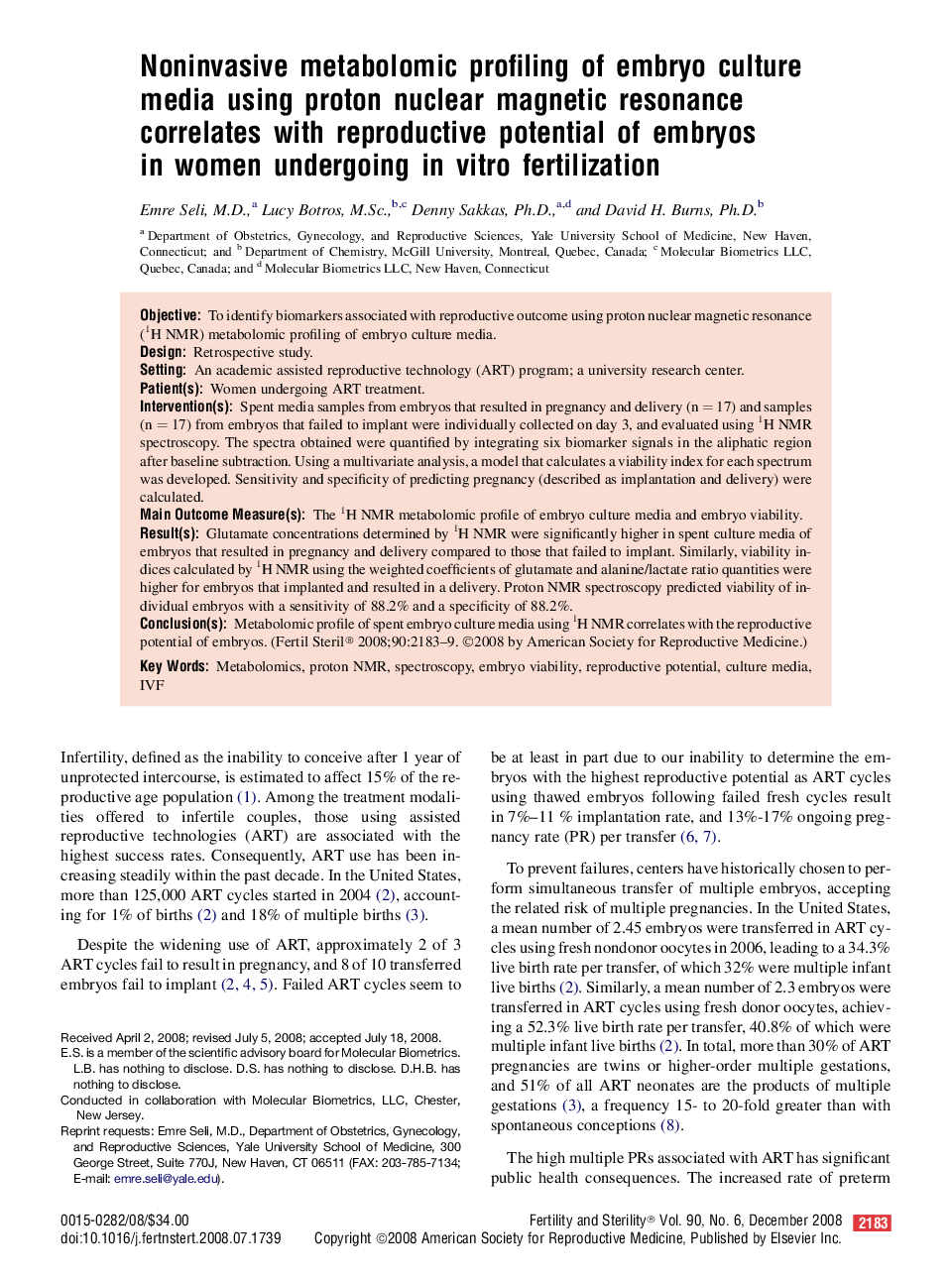| Article ID | Journal | Published Year | Pages | File Type |
|---|---|---|---|---|
| 3937181 | Fertility and Sterility | 2008 | 7 Pages |
ObjectiveTo identify biomarkers associated with reproductive outcome using proton nuclear magnetic resonance (1H NMR) metabolomic profiling of embryo culture media.DesignRetrospective study.SettingAn academic assisted reproductive technology (ART) program; a university research center.Patient(s)Women undergoing ART treatment.Intervention(s)Spent media samples from embryos that resulted in pregnancy and delivery (n = 17) and samples (n = 17) from embryos that failed to implant were individually collected on day 3, and evaluated using 1H NMR spectroscopy. The spectra obtained were quantified by integrating six biomarker signals in the aliphatic region after baseline subtraction. Using a multivariate analysis, a model that calculates a viability index for each spectrum was developed. Sensitivity and specificity of predicting pregnancy (described as implantation and delivery) were calculated.Main Outcome Measure(s)The 1H NMR metabolomic profile of embryo culture media and embryo viability.Result(s)Glutamate concentrations determined by 1H NMR were significantly higher in spent culture media of embryos that resulted in pregnancy and delivery compared to those that failed to implant. Similarly, viability indices calculated by 1H NMR using the weighted coefficients of glutamate and alanine/lactate ratio quantities were higher for embryos that implanted and resulted in a delivery. Proton NMR spectroscopy predicted viability of individual embryos with a sensitivity of 88.2% and a specificity of 88.2%.Conclusion(s)Metabolomic profile of spent embryo culture media using 1H NMR correlates with the reproductive potential of embryos.
